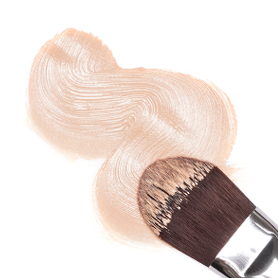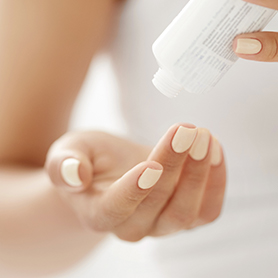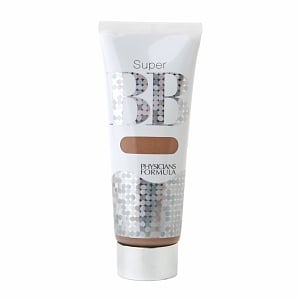
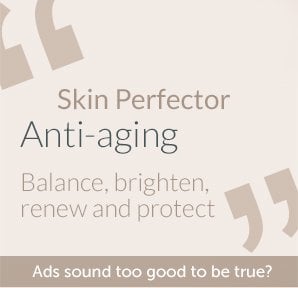 “Skin Perfector.” “Balance, brighten, renew and protect.” “Anti-aging.”
“Skin Perfector.” “Balance, brighten, renew and protect.” “Anti-aging.”
The ads sound too good to be true. BB (stands for beauty balm) and CC (stands for color corrector or complexion corrector) creams claim to be all-in-one moisturizer, concealer, foundation and sometimes sunscreen.
What are they, really? Do they contain harmful chemicals? Are they better than the stuff on your dresser and in your bag? We researched the formulations of more than 100 BB and CC creams and found, to our surprise -- Some BB/CC creams may be a good choice – if you do your homework:
EWG’s inquiry concludes that some of these multi-taskers are worth considering because:
-- Using one 1 product instead of three or four can reduce your exposure to potentially hazardous chemicals.
-- Some provide everyday protection from the sun’s dangerous rays, which cause aging and possibly cancer.
-- Many offer good value for the dollar.
Most important, they typically don’t contain harsh, hazardous chemical peels or bleaching agents. None of the BB and CC creams studied by EWG is made with hydroquinone, a possibly carcinogenic skin whitener that the federal Food and Drug Administration wants to ban and that is already barred in many other countries.
But consumers must do their homework – because some BB and CC creams contain oxybenzone, an ingredient linked to hormone disruption, vitamin A derivatives, linked to skin cancer, or other potentially hazardous ingredients.
Why EWG rates BB and CC creams
If the U.S. Food and Drug Administration adequately regulated cosmetics and sunscreen products, consumers wouldn’t have to worry whether a BB or CC cream contained harmful ingredients or truly protected their skin from the sun. The FDA has issued a weak and incomplete set of regulations for over-the-counter sunscreen products. These rules do little to ensure public health protection. For years, FDA has promised to issue more stringent health-protective rules, but the agency has not delivered.
As long as government inaction leaves the public in the dark, EWG offers advice consumers can trust.
Top Picks
Products to Avoid
| BB and CC Creams to Avoid | Poor UVA/UVB Balance | Contains Vitamin A | Contains Oxybenzone | Cost per ounce |

|
X |
|
X |
$7.00 |

|
X |
|
X |
$31.11 |

|
|
|
X |
$26.43 |

|
X |
|
X |
$58.00 |

|
|
|
X |
$32.94 |

|
|
|
X |
$39.00 |

Estee Lauder Daywear Anti-oxidant Beauty Benefit BB Crème, SPF 35 |
X |
|
X |
$39.00 |
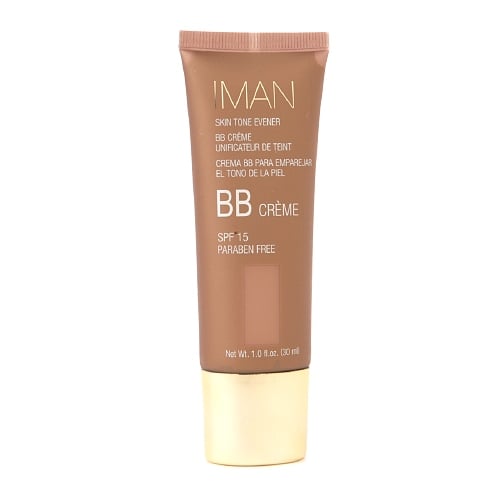
|
|
X |
X |
$20.00 |

|
X |
|
X |
$27.41 |

|
|
|
X |
$22.65 |

|
X |
|
|
$25.56 |

|
X |
|
|
$14.99 |

|
|
X |
|
$8.82 |

|
X |
|
X |
$23.08 |

Maybelline Dream Fresh BB 8-in-1 Beauty Balm Skin Perfector, SPF 30 |
X |
|
|
$8.99 |

|
|
X |
X |
$32.00 |

|
|
X |
X |
$21.18 |
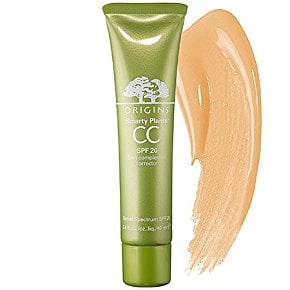
|
|
|
X |
$25.00 |

|
|
X |
|
$38.00 |
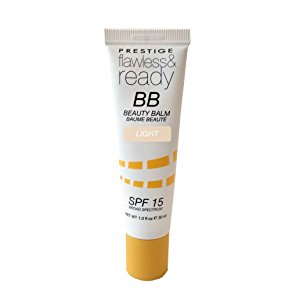
|
|
|
X |
$11.50 |

|
|
X |
|
$25.33 |

|
X |
|
X |
$39.00 |

|
X |
|
X |
$42.00 |

|
|
X |
|
$21.18 |

|
|
X |
|
$22.67 |

|
|
X |
|
$12.50 |
What are BB and CC creams?
Ads claim that BB and CC creams are designed to function as various combinations of facial sunscreen, foundation, concealer, anti-aging cream, bronzer, highlighter, oil absorber and moisturizer. The specifics differ by brand.
A German surgeon named Christine Schrammek developed the concept for these creams in 1980, when she was searching for something to soothe and smooth skin that had been subjected to peeling with a laser (Holmes 2012). The original creams combined a concealer, foundation, moisturizer and sunscreen in one bottle.
About five years ago, Korean and Japanese women began using products marketed as “BB creams” that leveraged Schrammek’s concept. These creams were built to appeal to Asian women. They reflected light to create the illusion of paler, pinker skin and evened out skin tone. They offered the convenience of a single product instead of multiple bathroom-and-purse-cluttering items.
In 2011, products bearing the name “BB cream” began appearing on the U.S. market in a narrow range of shades. Over the past two years, cosmetics makers have added more shades and branded the new products as “color correcting” or “CC” creams. Some current-generation BB and CC creams use terms like “anti-aging” and “anti-wrinkle” to imply they can restore youth.
How safe are the ingredients in BB and CC creams?
You are often better off using a BB or CC cream. EWG’s analysis shows that a consumer using a typical BB or CC cream would be exposed to an average of 40 ingredients, while a consumer using three separate products -- foundation, concealer and moisturizing sunscreen -- would be exposed to an average of 70 ingredients.
You should read labels carefully and use EWG’s Skin Deep Database to check out the scores of the BB or CC cream you’re considering. Formulations vary widely – and not all are good choices.
The number of chemicals matters because the more chemicals to which you are exposed, the more likely you are to encounter a hazardous one. It’s a gamble: many chemicals on the market have never been thoroughly assessed for safety.
EWG’s analysis shows that the average number of ingredients recognized as hazardous -- those that score poorly in EWG’s Skin Deep database -- dropped from three to one when the user shifted from a three-product regimen of foundation, concealer and moisturizing sunscreen to a BB or CC cream.
An important caveat: some of the BB and CC creams that EWG analyzed contained up to five hazardous ingredients, including oxybenzone and retinyl palmitate (a form of vitamin A). Other potentially hazardous substsances may be hidden from the consumers’ eyes because many companies lump such ingredients into the term “fragrance.” The cosmetics, cleaning and candle industries often use the vague term “fragrance” on ingredient lists rather than disclosing the specific chemicals in the product.
In 2010, after years of intentional mystery, the International Fragrance Association published a list of 3,163 ingredients that its members reportedly use to make consumer products (EWG 2010). It’s impossible to know which of these fragrance ingredients might be in your BB and CC creams. Some of them are quite troubling, so it’s best to stay away from products whose labels list non-specific “fragrance.”
A few examples of ingredients that may lurk behind the term “fragrance”:
- Phthalates are potent hormone disruptors linked to reproductive system birth defects in baby boys
- Octoxynols and nonoxynols break down into persistent hormone disruptors
- Citral, eugenol, coumarin and geraniol are natural or synthetically derived chemicals that are associated with allergies and contact dermatitis and that have been banned or restricted in the European Union
Read more about the problems with fragrance here: https://www.ewg.org/enviroblog/2010/02/3163-ingredients-hide-behind-word-fragrance
Do BB and CC creams provide adequate sun protection?
BB and CC creams are not adequate for use in intense sunlight nor long periods. Some of them may help protect skin from the sun’s damaging ultraviolet radiation during low-exposure activities such as driving, walking between shaded areas or indoors, but they will not shield your skin from harmful rays if you are outside for a longer time span or if you will be in intense sunlight. If you are out at midday, say, running, playing tennis, cycling or watching your kid’s cross country meet, a “beach and sport” sunscreen that rates highly in EWG’s Sunscreen Database is a better option.
As with all other sunscreens, EWG suggests that you avoid products with:
- poor UVA/UVB balance
- oxybenzone
- vitamin A, also known as retinyl palmitate
All the BB and CC creams EWG assessed had a sun protection factor (SPF) rating. But the term SPF doesn’t translate to adequate sun protection in all circumstances. As EWG’s 2013 Guide to Sunscreens points out, the chemicals that form a product’s sun protection factor are aimed at blocking ultraviolet B rays, the primary cause of sunburn and non-melanoma skin cancers such as squamous cell carcinoma (von Thaler 2010).
A sunscreen lotion’s SPF rating has little to do with the product’s ability to shield the skin from ultraviolet A rays, which penetrate deeper into the skin and are harder to block with sunscreen ingredients approved by the federal Food and Drug Administration for use in U.S. sunscreens. Scientists know less about the dangers of UVA radiation, but the general consensus is that it is less obvious than UVB damage but possibly more serious.
Strikingly, 12 percent of BB and CC creams assessed by EWG had unbalanced UVA and UVB protection.
Read more about the importance of using a balanced sunscreen here: https://www.ewg.org/2013sunscreen/whats-wrong-with-high-spf/
BB and CC creams offer one clear benefit: you may be less likely to forget to apply sunscreen if it’s already in your one-step cream.
In order to take full advantage of sun protection in your BB or CC cream, be careful to cover your face completely. Don’t dab it on as a “spot” treatment to cover blemishes. If you need it for color correction, apply extra on dark spots.
Above all, don’t fall into the trap of letting your BB and CC cream give you a false sense of security. You need to take other sun protection measures. The best defenses against getting too much harmful UV radiation are protective clothing, shade and timing. For important sun safety tips see: https://www.ewg.org/2013sunscreen/top-sun-safety-tips/
The problem with oxybenzone
Oxybenzone, found in 18 percent of the BB and CC creams EWG analyzed, is a widely-used sunscreen ingredient that can penetrate the skin, cause allergic skin reactions and may disrupt hormones (Calafat 2008, Rodriguez 2006, Krause 2012). Preliminary research suggests a link between higher concentrations of oxybenzone and its metabolites in the body and increased risk of endometriosis and lower birth weight in daughters (Kunisue 2012, Wolff 2008).
EWG suggests products with titanium dioxide and zinc oxide. These minerals provide broad-spectrum protection with fewer health concerns. Read more about oxybenzone here: https://www.ewg.org/2013sunscreen/the-trouble-with-sunscreen-chemicals/
The problem with vitamin A
About 10 percent of the BB and CC creams EWG analyzed contained retinyl palmitate or other vitamin A derivatives. Vitamin A, an anti-oxidant, is added to skin products because manufacturers believe it slows skin aging. While this may be true for lotions and night creams used indoors, a study by federal scientists has suggested that retinyl palmitate can spur excess skin growth and may speed the development of skin tumors and lesions when applied to sun-exposed skin (NTP 2012). Other studies have shown that in sunlight, retinyl palmitate can form free radicals that damage DNA (NTP 2000).
Read more about vitamin A here: https://www.ewg.org/2013sunscreen/the-problem-with-vitamin-a/
Where the FDA fails consumers
Most people use cosmetics and other personal care items without a second thought, believing the government oversees their safety. Not so. No health studies or pre-market testing are required for these products.
Americans’ frequent exposures to cosmetics and personal care products raise questions about the potential health risks from the myriad of ingredients that have not been comprehensively assessed for safety. These ingredients migrate into the bodies of nearly every American.
For instance, in August 2005, scientists from the University of Rochester reported that prenatal exposure to phthalates — chemicals found in personal care products and other consumer products — could cause the reproductive organs of male infants to develop abnormally (Swan 2005). Studies have shown again and again that hormone systems of wildlife are thrown in disarray by chemicals from personal care products that rinse down drains and into rivers (NIEHS 2010).
The FDA has failed to issue a comprehensive set of rules for over-the-counter sunscreens. Thought it has tackled certain misleading claims about these products, it has yet to establish a definitive list of active ingredients it considers to be safe and effective. It does not limit SPF values, even though its scientists know that SPFs greater than 50 offer little consumer benefit. It has not banned sprays, even though they may not provide adequate protection and they can be inhaled. It has not barred retinyl palmitate, even though its own scientists found significant associations between this chemical and skin tumors and lesions
EWG has researched and advocated personal care product safety for more than a decade. We believe that the nation’s laws and regulations governing cosmetics and personal care products are desperate need of overhaul.
Here’s why:
Myth – If it’s for sale at a supermarket, drugstore, or department store cosmetics counter, it must be safe.
Fact – The FDA has no authority to require companies to test products for safety. The agency does not review or approve the vast majority of products or ingredients before they go on the market. The agency conducts pre-market reviews only for certain color additives and active ingredients in cosmetics classified as over-the-counter drugs (FDA 2005, 2010).
Myth – The government prohibits dangerous chemicals in personal care products, and companies wouldn’t risk using them.
Fact – According to the FDA’s Office of Cosmetics and Colors, “a cosmetic manufacturer may use almost any raw material as a cosmetic ingredient and market the product without an approval from FDA.” (FDA 2012) Personal care products are manufactured with 10,500 unique chemical ingredients, some of which are known or suspected carcinogens, toxic to the reproductive system or known to disrupt the endocrine system. Though some companies make products that are safe to eat, others choose to use dangerous ingredients like coal tar and formaldehyde, both human carcinogens, and lead acetate, a developmental toxin.
Myth – Cosmetic ingredients are applied to the skin and rarely get into the body. When they do, levels are too low to matter.
Fact – People are exposed by breathing sprays and powders, swallowing chemicals on the lips or hands or absorbing them through the skin. Studies find evidence of health risks. Biomonitoring studies have found cosmetics ingredients – like phthalate plasticizers, paraben preservatives, the pesticide triclosan, synthetic musks, and sunscreens – as common pollutants in men, women and children. Many of these chemicals are potential hormone disruptors (Gray 1986, Schreurs 2004, Gomez 2005, Veldhoen 2006). Products commonly contain penetration enhancers to drive ingredients deeper into the skin. Studies find health problems in people exposed to common fragrance and sunscreen ingredients, including elevated risk for sperm damage, feminization of the male reproductive system, and low birth weight in girls (Duty 2003, Hauser 2007, Swan 2005, Wolff 2008).
Myth – The FDA would promptly recall any product that injures people.
Fact – The FDA has no authority to require recalls of harmful cosmetics. Manufacturers are not required to report cosmetics-related injuries to the agency. The FDA relies on companies to report injuries voluntarily (FDA 2005).
Myth – Consumers can read ingredient labels and avoid products with hazardous chemicals.
Fact – Federal law allows companies to leave many chemicals off labels, including nanomaterials, ingredients considered trade secrets and components of fragrance (EWG 2008). Fragrance may include any of 3,163 different chemicals (IFRA 2010), none of which are required to be listed on labels. Fragrance tests reveal an average of 14 hidden compounds per formulation, including potential hormone disruptors and diethyl phthalate, a compound linked to sperm damage (EWG and CSC 2010).
When risky chemicals are used in cosmetics, the stakes are high. These are not trace contaminants that may be measured in parts-per-million or even parts-per-billion in food or water. They are substantial components of the product, just as flour is a primary ingredient in bread.
The FDA’s spotty record on sun safety
The FDA issued several new rules for sunscreens in 2011 but left unresolved a number of critical questions (FDA 2011). Addressing them is vital to ensuring the safety and efficacy of sunscreen products.
The FDA has been working on sunscreen rules for more than three decades — and yet consumers still can’t be sure that their sunscreen offers adequate protection. Among the shortcomings of the FDA rules:
- FDA does not yet prohibit SPF values above 50, even though the FDA acknowledges that they don’t work better and give sunscreen users a false sense of security;
- FDA has not yet approved petitions to allow newer sunscreen filters to be added U.S. sunscreens;
- FDA has not restricted problem ingredients like oxybenzone, associated with endocrine disruption, and the vitamin A-derivative retinyl palmitate (EWG 2013); and
- FDA is studying but has not yet restricted spray sunscreens, even though it acknowledges they can be inhaled and may not provide a thick enough coating of sunscreen on skin.
Meanwhile, every year more people are diagnosed with skin cancer than any other form of cancer (ACS 2013).
Sunscreen regulations should be a top priority for the FDA, especially since some studies suggest that people use sunscreen to extend their time in the sun, unaware that these products won’t thoroughly protect them (EWG 2013).
These critiques of the current regulatory system are important for consumers to keep in mind when choosing a BB or CC cream. You simply can’t trust the FDA to ensure that those products are truly safe and effective.



